
Get exclusive shopping offers and guides
Straight to your inbox
We’re reader-supported and may be paid when you visit links to partner sites. We don’t compare all products in the market, but we’re working on it!
| Launch price (RRP) | $499 |
|---|---|
| Launch date | 08/2021 |
The Motorola Edge 20 Fusion sits in an unusual position. It's a little more expensive than the recently reviewed Motorola Moto G50 5G, but it's the cheapest member of the new 2021 Motorola Edge family.
That gives it (if you'll forgive the pun) something of an edge because it gets some of the sparkly new features of the higher-end range while still keeping an affordable price point. Like most phones where the word "affordable" gets thrown around, there are some compromises, but this is generally a really good phone for its money.
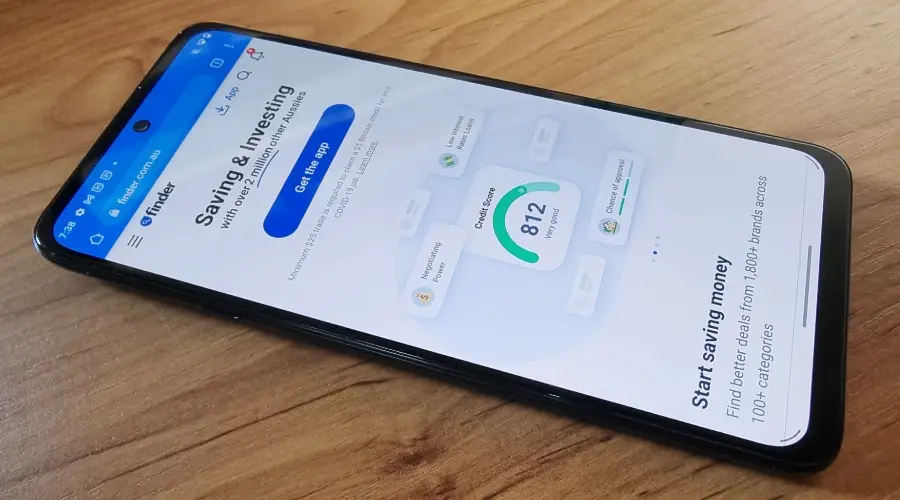
Image: Alex Kidman/Finder
Out of the box, the Motorola Edge 20 Fusion doesn't appear all that special. It's not super-thin the way the pricier Motorola Edge or Motorola Edge Pro phones are. The design seems to hark back to the cheaper G series phones, and the comparison with the Motorola Moto G50 5G is particularly close. Both share the same side-mounted dual fingerprint sensor and power button, and both throw the standard Motorola "Batwing" logo on the back, somewhat hidden behind the pre-installed protective case.
As I've been testing both simultaneously, I'd like to say that I've never picked up the G50 5G when looking for the Edge 20 Fusion, but this would be what top scientists call a filthy lie.
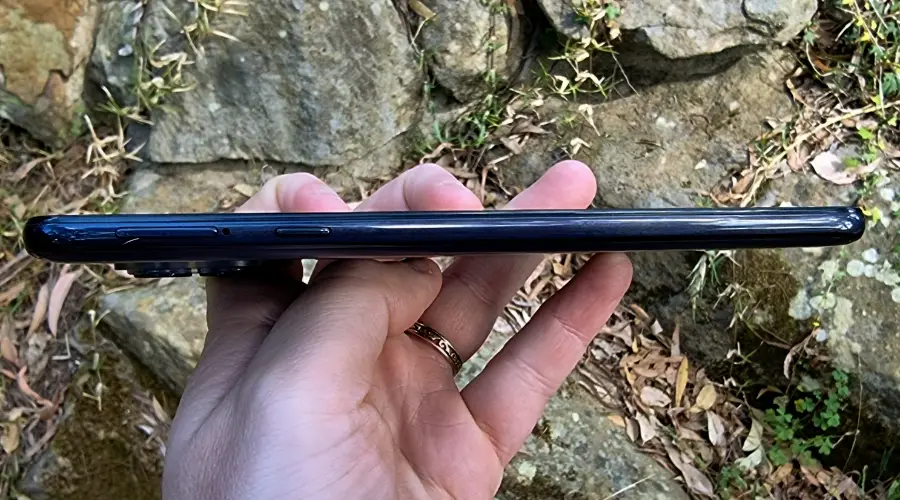
Image: Alex Kidman/Finder
The Motorola Edge 20 Fusion does shift its Google Assistant button to the left-hand side of the phone, opposite the volume controls on the left. More than once I've invoked the assistant by accident when trying to up the volume, but your experience may vary.
For such a large phone – 166x76x8.25mm – the Motorola Edge 20 Fusion is pleasantly weighted at just 185g. Those with smaller hands will still struggle, but it's certainly lighter than some phones at this size.
In Australia, the Motorola Edge 20 Fusion sells in either a dark "Electric Graphite" or light blue "Cyber Teal" finish, depending on just how ostentatious you feel like being with your phone colour choices.
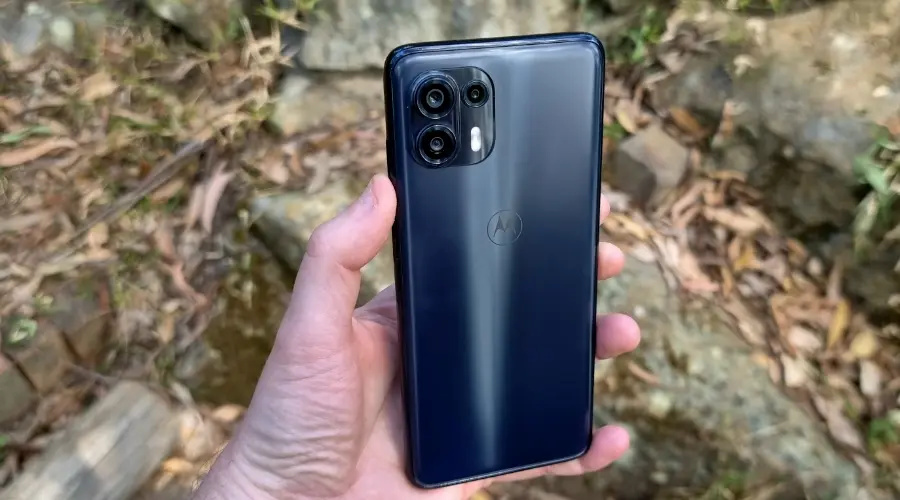
Image: Alex Kidman/Finder
It's in the display that Motorola does a little something extra compared to many other low mid-range (or high-budget, depending on your point of view) handsets. It features a 6.7-inch 2400x1080 pixel pOLED display with support for up to 90Hz refresh rates. Out of the box, it's set to 60Hz to preserve battery life.
An interesting feature here is that Motorola is quite binary about the Motorola Edge 20 Fusion's refresh rate choices. Many phones offer an "auto" setting to manage refresh rates for you, and in some cases, they're the only way you can access higher screen refresh rates. For the Motorola Edge 20 Fusion, it's either 60Hz or 90Hz, plain and simple.
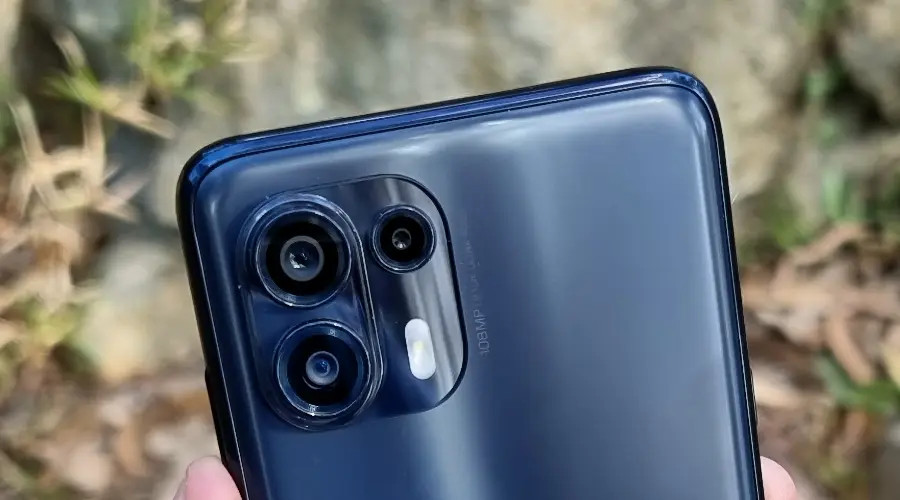
Image: Alex Kidman/Finder
The Motorola Edge 20 Fusion wants to hit you with a big honking number in terms of cameras. That number is 108.
No, it doesn't have 108 cameras on the rear of the phone, although that would be quite an interesting design challenge.
Instead, it's got a 108MP sensor on the rear as its primary camera, backed up with an 8MP ultra-wide 118-degree camera that also does double duty as its macro shooter.
It's a sign of how fast camera technology is moving because it was only in early 2020 that the same 108MP sensor was a feature of the flagship Samsung Galaxy S20 series handsets. Now it's in a mid-range phone, but as always, it's not just a numbers game.
Motorola predictably (and smartly) uses pixel binning to deliver 12MP shots by default out of that 108MP sensor, giving it better low-light performance and sharpness in most detail areas. It's also how the phone gets around its lack of any true telephoto lens because it can more aggressively crop in with less detail loss. This doesn't always work, even though Motorola limits digital zoom to just 8x.
As an example, here's a standard riverbank shot taken with the Motorola Edge 20 Fusion with no zoom applied. You can just make out the bird on the bank:

Image: Alex Kidman/Finder
Pushing that 108MP sensor to an 8x zoom delivers results that are less than pleasing:

Image: Alex Kidman/Finder
That 108MP sensor does allow for decent quality images in most situations, although Motorola still has some issues in low-light situations. However, that's not unusual for a phone in this price bracket.
At the front, underneath that hole-punch camera, there's a 32MP selfie shooter that does fairly well in most situations. Portrait mode shooting is supported, but with no secondary focusing lens at the front. It's a totally AI-driven affair with mixed results. Compare this standard selfie shot of yours truly...

Image: Alex Kidman/Finder
... with this shot in portrait mode with focus blur maximised:

Image: Alex Kidman/Finder
The line between "pleasing background blur" and "was I just photoshopped into this?" is one that the Edge 20 Fusion doesn't always get right.

Image: Alex Kidman/Finder
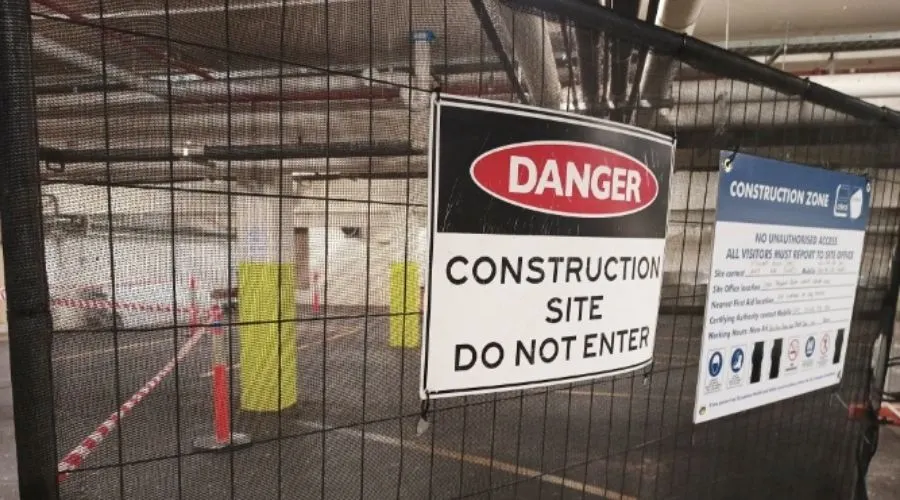
Image: Alex Kidman/Finder

Image: Alex Kidman/Finder

Image: Alex Kidman/Finder

Image: Alex Kidman/Finder
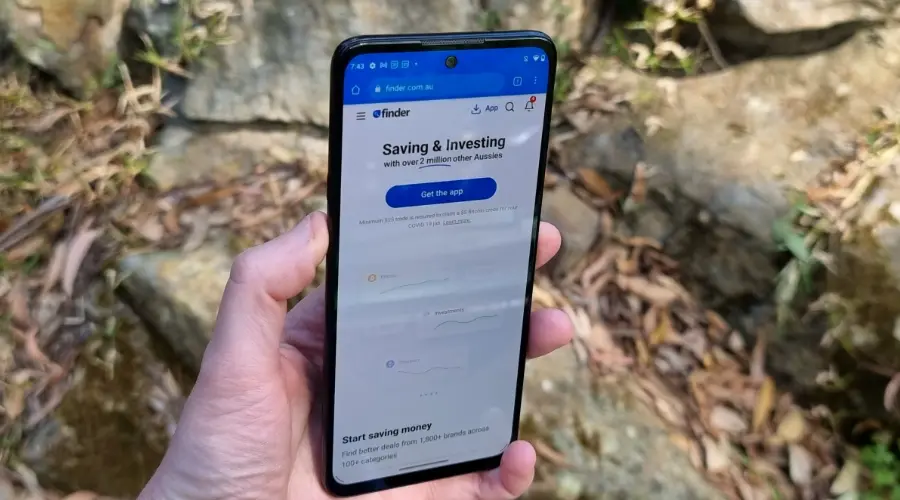
Image: Alex Kidman/Finder
In the mid-range 5G capable phone market, we've seen something of a battle between Qualcomm and MediaTek in terms of processor choice. MediaTek has long been the silicon brand of choice for anyone building a lower-cost phone, and the Motorola Edge 20 Fusion takes advantage of that by packing in the MediaTek Dimensity 800 SoC alongside 6GB of RAM and 128GB of storage.
That makes for an interesting comparison with the cheaper Motorola Moto G50 5G, which uses the even cheaper Dimensity 700 package with just 4GB of RAM.
At a CPU benchmark level, surprisingly, the G50 5G just edged out the Edge 20 Fusion in Geekbench's CPU test:
But that extra RAM and slightly better GPU give the Motorola Edge 20 Fusion a solid edge in graphics performance, as seen in 3DMark's graphics benchmarks:
Benchmarks only give an indication of performance quality, but in real-world testing, the Motorola Edge 20 Fusion delivers a generally pleasing performance for a phone in this price bracket. Throw more demanding games or apps at it and you'll see very intermittent performance bottlenecks, but for everyday web usage, social media or similar, it flies along nicely.
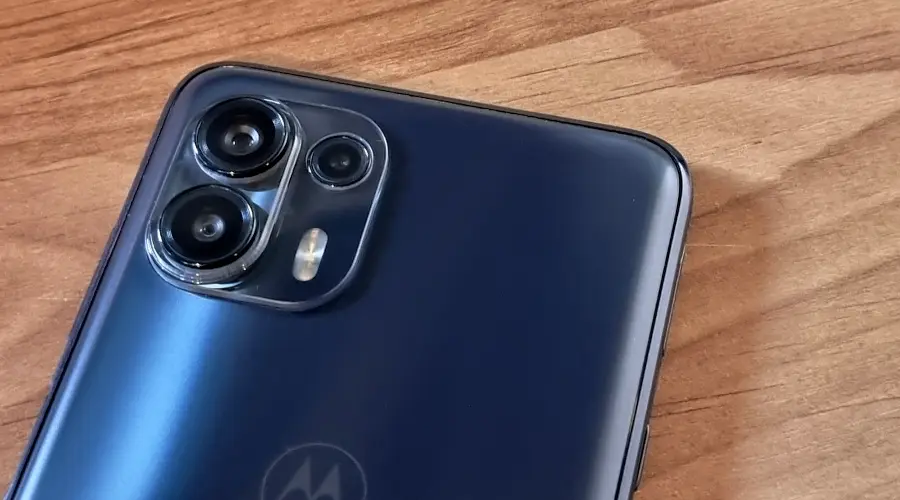
Image: Alex Kidman/Finder
The Motorola Edge 20 Fusion is also 5G capable, and again my ability to test out its 5G chops was constrained by current pandemic restrictions on my movement. Testing with the Telstra 5G network in my local area gave a wide variety of speed points, from 200Mbps all the way up to 550Mbps at different times. That's very much the nature of mobile networks, of course, because they can be highly variable. As a sub-6Ghz only 5G device, you're never going to hit the highest peaks of 5G performance right now, but then live mmWave 5G networks in Australia really aren't a reality at the time of writing anyway.
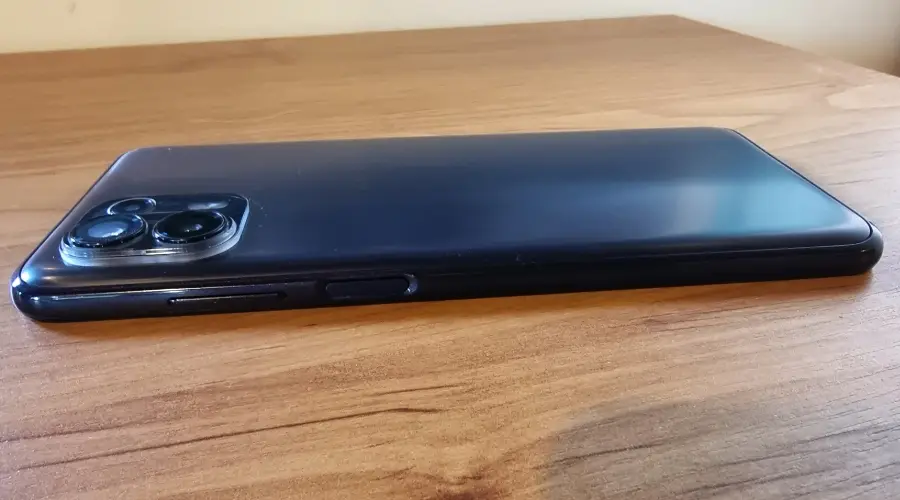
Image: Alex Kidman/Finder
The Motorola Edge 20 Fusion packs in a 5,000mAh battery behind its display. There have been a large number of these high-capacity battery mid-range phones of late with varying actual battery quality. Just as with cameras, the battery life of a phone is more than just the sum of its battery cells, although a little more rarely hurts.
The Motorola Edge 20 Fusion has a large battery, but it's also got that 90Hz display to contend with when it comes to actual power drain. To put that to a benchmark test, I ran the Motorola Edge 20 Fusion through Finder's standard battery benchmark. That involves charging the battery to 100% and then streaming a 1080p YouTube video at maximum brightness and moderate volume for an hour.
The key figure to look for here is at least 90% battery because phones that fall short of that mark will often struggle to last a full day. Here's how the Motorola Edge 20 Fusion compares:
That 94% figure is very pleasing because every single percentage point above 90% can directly end up as extra minutes of battery life in real-world use. It's especially impressive on a 90Hz display.
The good news here is that the Motorola Edge 20 Fusion also stands up to real-world testing, easily lasting a day on heavy usage, and potentially even 2 days if you're a light phone user. However, that's all predicated on being primarily on Wi-Fi or 4G networks. While testing with 5G networks – in a limited capacity due to pandemic restraints, sadly – I saw faster battery draw. As always, if for some reason you want your battery to go downhill fast, 5G usage is the way to go.
The Motorola Edge 20 Fusion doesn't support wireless charging, but it will support up to 30W wired charging over USB-C. A nice feature here is that Motorola not only provides a charger in the box, but it actually provides a full 30W model. Many manufacturers support fast charging rates but then opt to shave a little extra profit out by shipping with a low-power charger, but that's not the case here.
Like any other mid-range phone, Motorola's made some compromises with the Motorola Edge 20 Fusion. The fancier parts and specifications go into the more expensive Motorola Edge 20 and Edge 20 Pro handsets, although they're compromises that might make the Motorola Edge 20 Fusion a better overall value proposition. Its battery life is very good for a 90Hz capable handset, its general processor performance is nippy and while the 108MP rear sensor doesn't quite live up to its potential, it's still very good for a phone in this price range.
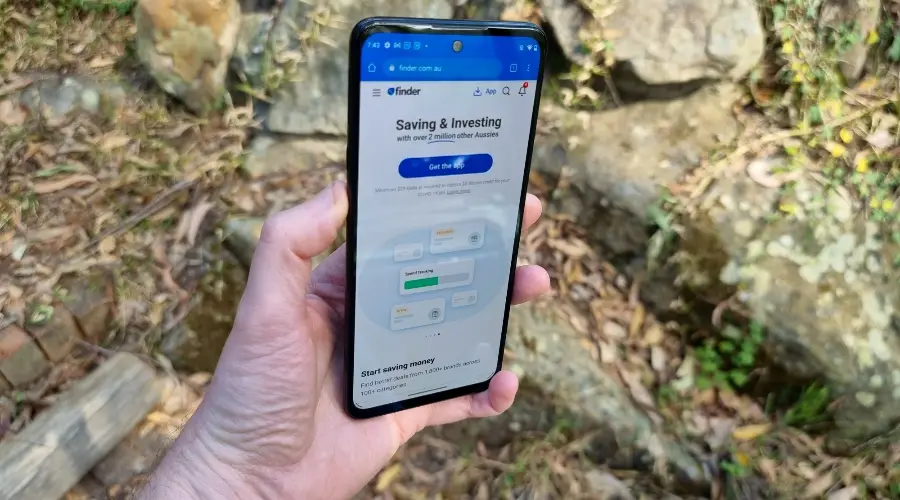
Image: Alex Kidman/Finder
The Motorola Edge 20 Fusion was tested over a 2-week period, benchmarking all features and running battery and camera tests to evaluate its overall quality. Limitations on movement due to the pandemic did limit the quantity and scope of 5G testing that was possible in this time frame.
Images: Alex Kidman